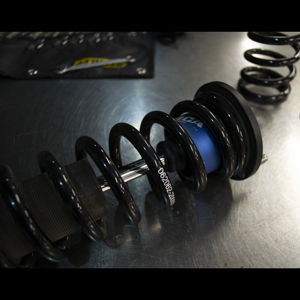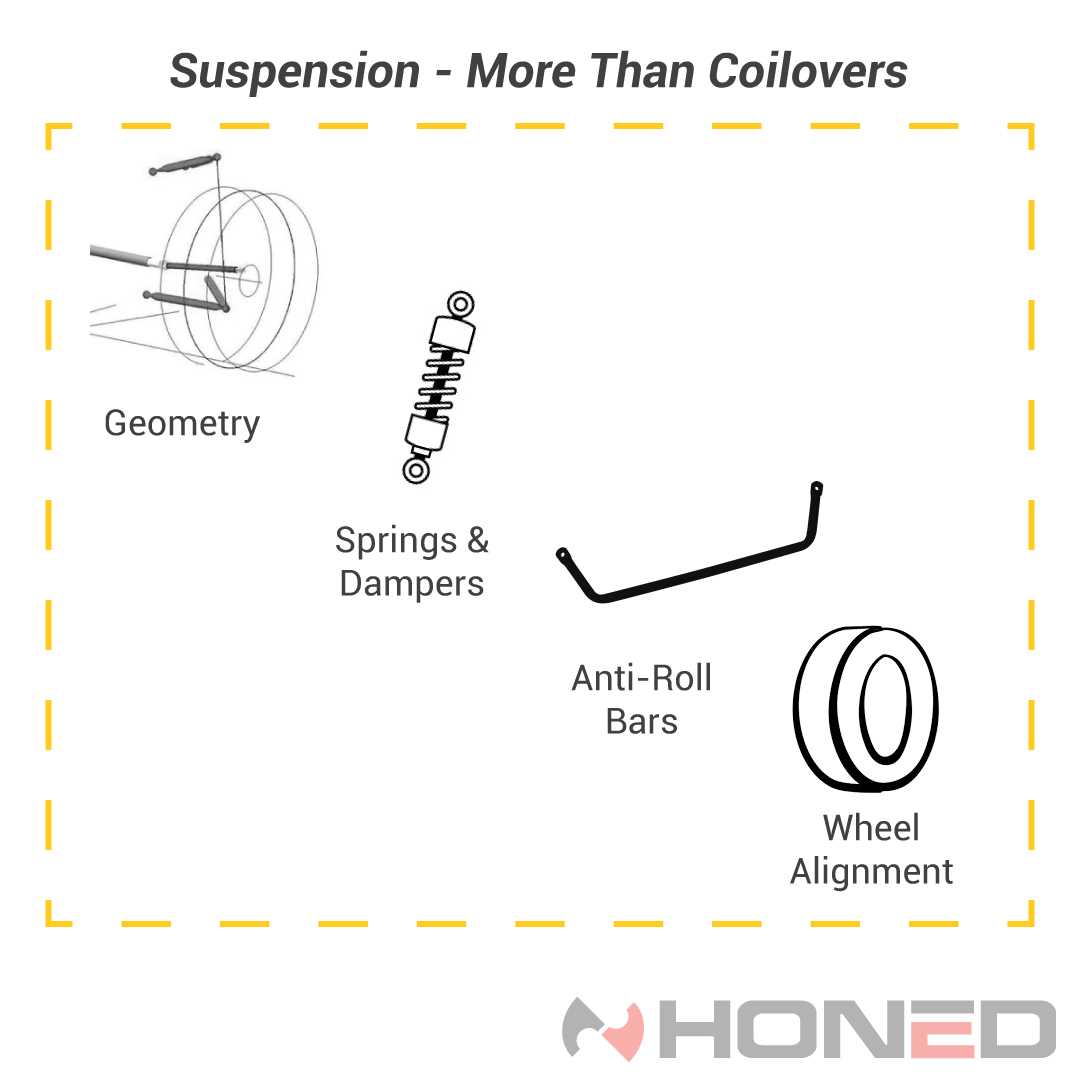How to Choose Coilovers for Your Honda

Step 1) Understand what you need
Consider the following:
What kind of tyres do you have or want to be using in the future?
What kind of driving am I doing with the car?
How far am I going to develop this car, would I want to upgrade Coilovers again in the future?
What is my budget for Coilovers?
Example:
Tyres: Street Tyres, treadwear 200+
Driving: Street and track, 50/50 priority
Do I want to upgrade again in the future: No
Budget: $2000.00
Step 2) Do some research, find out what spring rates other people doing the same kind of driving, with the same car, are using
Talk to people in your local club or at track events
Try doing a google search using these kinds of keywords (substitute your own requirements as needed)
“Honda Civic Spring Rates Street track driving”
Look for educated responses
Investigate other suspension changes that may be recommended for the level of performance you a looking for, along with spring rate choice, things like:
– Swaybar/Anti-roll bar sizes
– Roll Centre Correction
Step 3) Find out what you can buy
Look locally or online for Coilover retailers
Look for Coilover brands that advertise what spring rates they supply (for your specific chassis) or that give you the option to select your own spring rates
Step 4) Limit your options to what’s in your budget
You should have a shortlist of Coilover options that meet the following criteria:
– You can actually get
– Come with the correct spring rates for your application
Before you choose the cheapest option on your shortlist there are some other factors you may want to take into account
Can they be serviced? Can things like the shaft seal be replaced etc
Do you want to be able to fine-tune the damping with an on damper adjuster? If yes, research this black hole and decided what level of adjustment you want
What kind of corrosion resistance do you need? Cheaper Coilovers have cheap coatings and on the threaded sleeve, this can cause the spring perch and lock nuts to jam.
Closing thoughts from Honed
Coilovers are not black magic and they, in our opinion should not be talked about as if they do all the heavy lifting by themselves when it comes to making a car handle.
Coilovers are little more than a spring mounted around a damper.
The spring is there to support the weight of the vehicle and the damper is there to minimise oscillation of the suspension after suspension events (impacts, cornering etc)
If the wheel isn’t moving up or down, like in steady state cornering then the damper isn’t doing anything at all.
We say these things not to downplay the importance of a good Coilover to your car’s handling but to contrast some of the over the top claims that Coilover manufacturers make about their products.
They are absolutely important, but the key thing is that the Coilovers you choose, work with your overall suspension strategy
Ever wondered why there are seemingly hundreds of Coilover brands? It’s because Coilovers are a very modular product that has a high degree of part/material commonality. This enables companies to offer Coilovers for lots of vehicles with minimal R&D, they effectively only have to re-design the body and control arm mounting points each time.
Be wary that very few take the time to understand each vehicle to a deep level and actually track test with all the different possible chassis setups to find out what is optimal.
This is why we recommend doing your research and talking to people who are enthusiasts for your specific vehicle and to consider what spring rates you get carefully.

